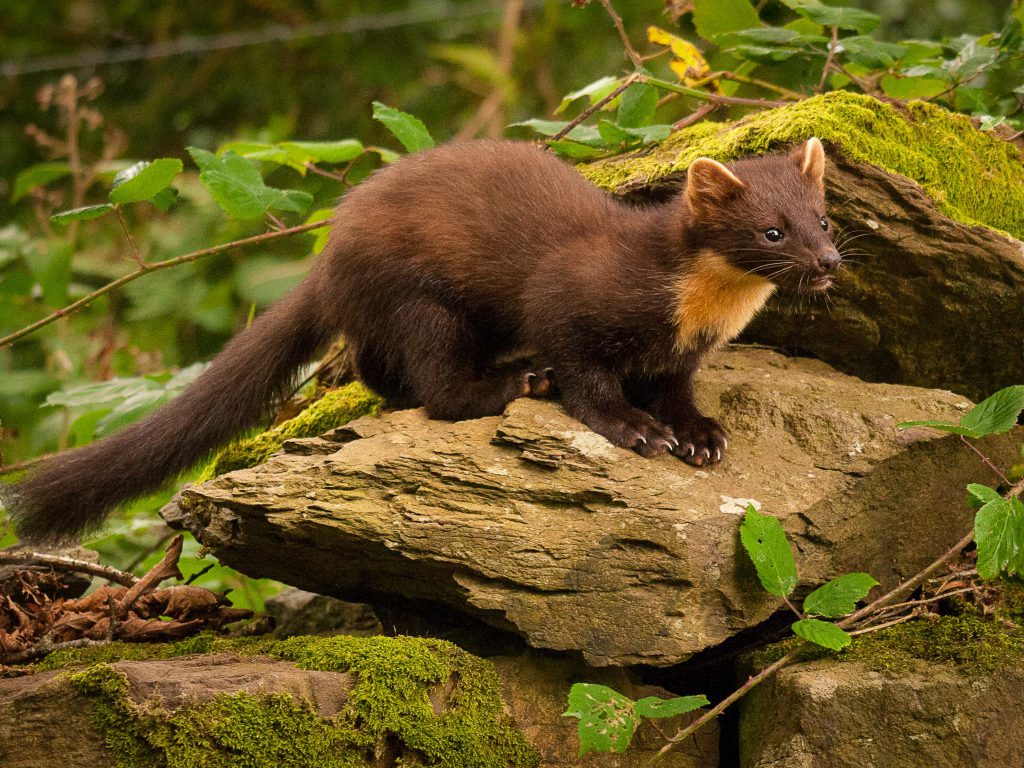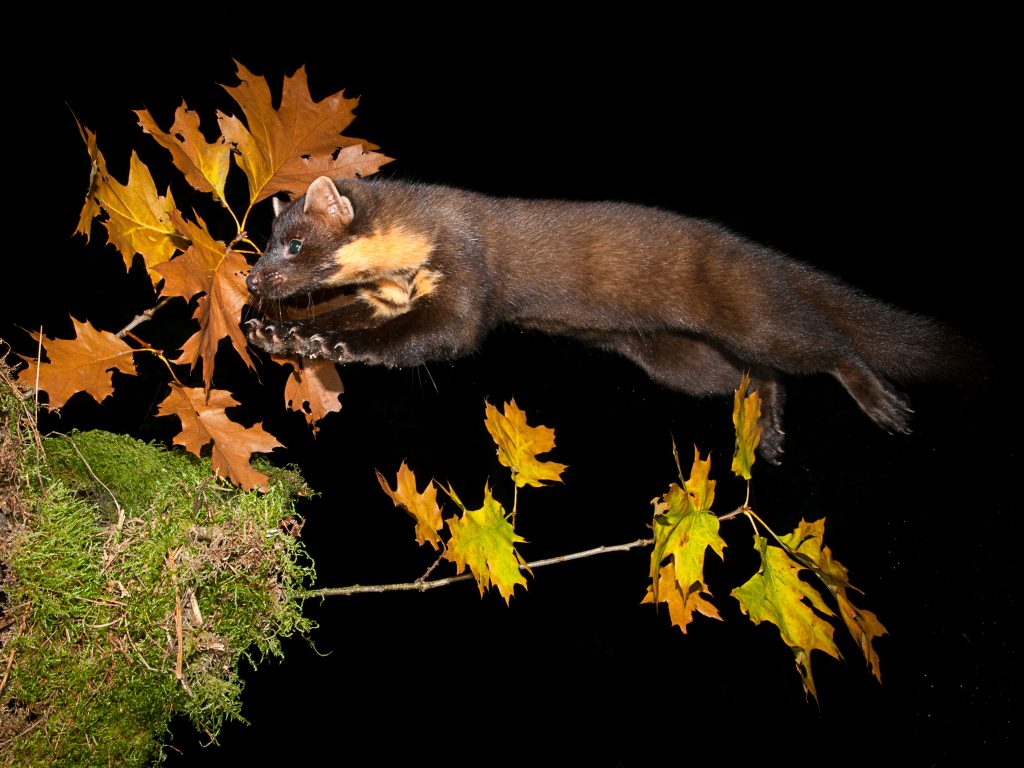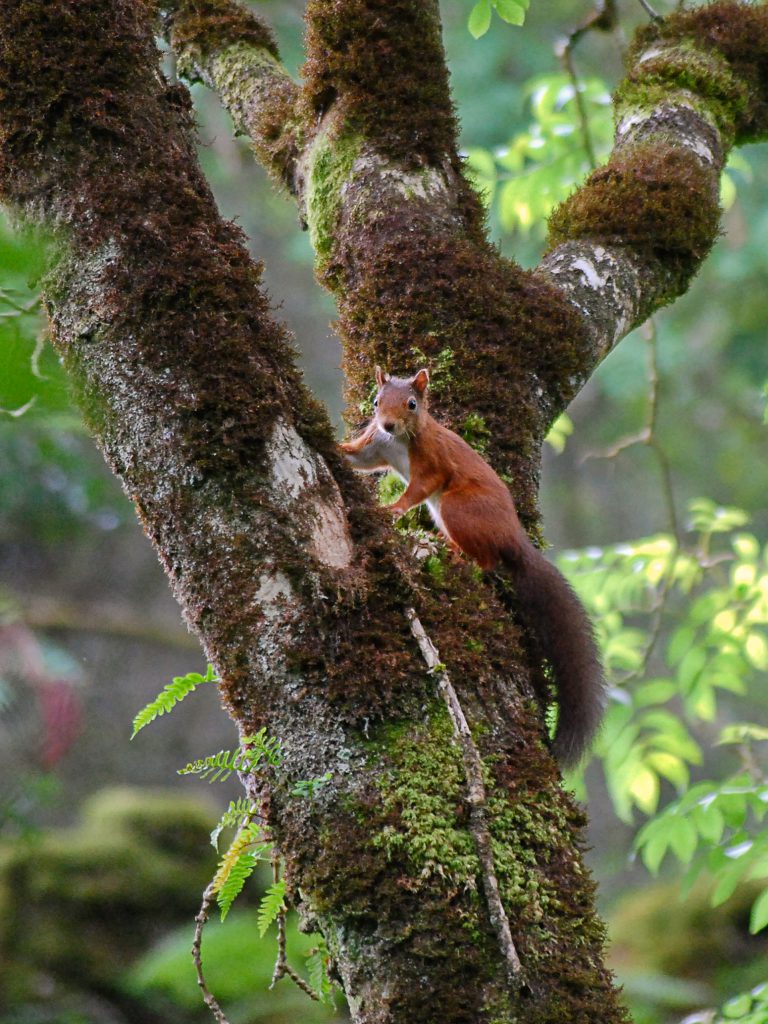Are pine martens red squirrel’s best friends?
Pine martens are cat sized predators that eat red squirrels. Curiously, wherever there is healthy population of pine martens, red squirrels are thriving. Dr Emma Sheehy from the University of Aberdeen is looking into this strange phenomenon.
By Elizabeth Thomsen
In the early 2000s there was a surprising rumour among gamekeepers and forestry workers in Ireland: where there was a healthy population of pine martens, grey squirrel numbers were declining, and red squirrels were thriving.
Pine martens are a cat sized predator native to Northern Europe. They live in woodlands and, like the red squirrel, are rare in most parts of the U.K.. There are populations in Scotland, Wales, and Ireland, and they appear to be slowly moving into England. They eat small mammals (including squirrels), carrion, insects, and fruit.
Red squirrels were once a common sight in the U.K., but there are now fewer than 160 000 remaining. The introduction of grey squirrels from North America in the 1870s, as well as habitat loss, led to massive decreases in red squirrel population. Grey squirrels can carry a disease called squirrel parapoxvirus. This disease often kills red squirrels, but does not affect grey squirrels. Scientists estimate that without help red squirrels could disappear from Britain by 2030. Before these rumours, says Dr Emma Sheehy from the University of Aberdeen, “you never heard of red squirrels doing better without [human] help.”
So what was happening? Emma studied the effect of pine martens on red and grey squirrel populations during her PhD at the University of Galway. “We didn’t really expect to find anything,” she says. However, she found that the rumours were true: red squirrels were doing much better than grey squirrels where there was also a population of pine martens.

Given that pine martens eat red squirrels, how do they help the red squirrel population increase? From her work in Ireland Dr Sheehy suspected it wasn’t just pine marten presence that was important, but pine marten density. Dr Sheehy moved to the University of Aberdeen and studied over 200 sites in Scotland, tempting squirrels to feeding boxes with hazelnuts, and pine martens with peanuts. Sticky patches on the feeders trapped hair from the animals, which was used for DNA analysis. The pine marten populations were also monitored using spatial capture-recapture techniques which allowed the team to estimate the level of exposure to pine martens experienced by both squirrel species.
The results were “unequivocal” says Dr Sheehy: the higher the exposure to pine martens, the lower the number of grey squirrels, and the higher the number of red squirrels.

My enemy’s enemy is my friend
There are several possible reasons behind this trend. Red squirrels and pine martens have evolved together, and this means that red squirrels may be naturally cautious of pine martens. Grey squirrels, on the other hand, have no natural predator similar to pine martens, and are therefore less likely to avoid them. Grey squirrels may also be an easier prey because they are larger and spend more time on the ground.
It seems counter-intuitive that an animal that eats red squirrels can help its overall population, but predators are a vital part of a healthy ecosystem. Non-native predators can have a devastating effect on native animals, but this study shows that native predators can have a detrimental effect on an invasive prey.
This work isn’t just important for red squirrels, and its wider implications for biodiversity and the reintroduction of native predators. Grey squirrels also cause millions of pounds worth of damage each year by stripping bark from trees such as oak, beech, and sycamore.

No quick fix
Currently, grey squirrel populations are controlled using trapping. This method is effective on a short term basis, but grey squirrel populations recover rapidly. Pine martens offer an effective long term conservation tool. Dr Sheehy emphasises, “it is not going to be an overnight solution.” Pine martens are slow breeders, and it could take several decades for them to reach high enough numbers to adequately protect red squirrels. Until then, we need to ensure the grey squirrel population remains controlled, so there are red squirrels left to save.
Photo credits: Maurice Flynn
